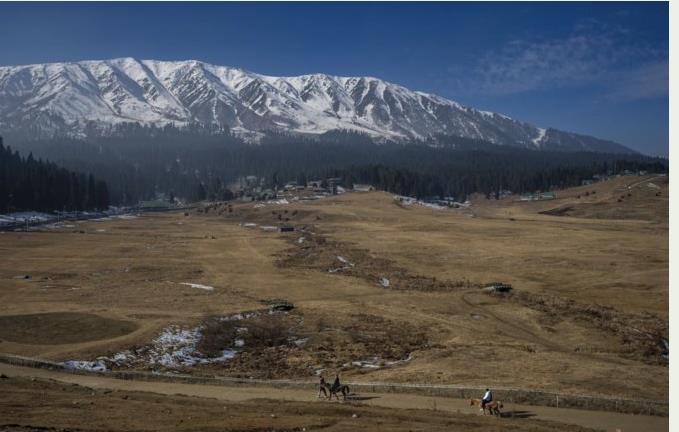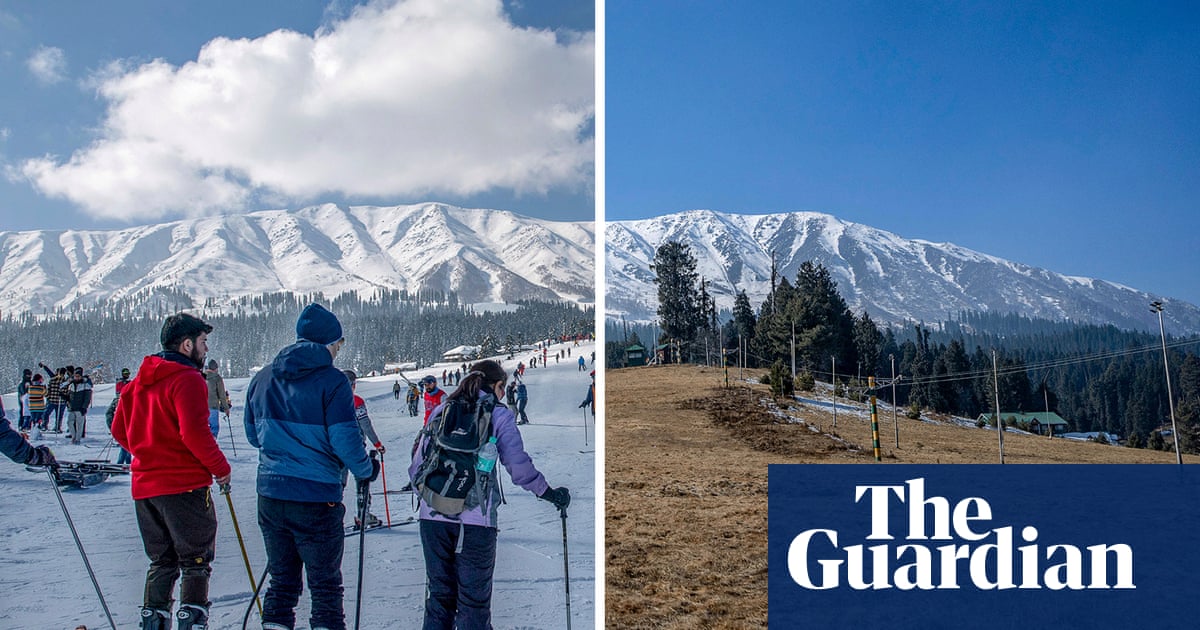
Kashmir’s famed tourism sector contributes around 7% to its GDP
Prolonged dry spell likely to affect region’s water resource and agriculture, expert says
New Delhi: A prolonged dry spell is sweeping across Indian-controlled Kashmir this winter, taking away familiar scenes of deep powder snow from the resort town of Gulmarg and threatening the livelihoods of thousands of people dependent on tourism and farming in the region.
At around 2,600 meters, Gulmarg is one of the world’s highest ski resorts, normally attracting snowboarders and skiers from around the world as they take advantage of the thick January powder that annually blankets the Himalayas.
But this year, the miles of slopes in the ski town are mostly brown and bare as snow barely fell, even during the harshest phase of winter that should have started in late December.
“This has never been the case before,” Showkat Ahmad Rather, who heads the Ski Association of Gulmarg, told Arab News on Sunday.
“We used to earn around $1,800 per month in this season, but there’s no income this time … More than 550 families are dependent on skiing income and they’re impacted because there’s no snow. It’s a really sad situation this time.”
The lack of snow has not only impacted the skiing industry but also the larger tourism industry in Gulmarg.
“Because of no snow this year, all those people who depend on tourism — be it people associated with skiing, be it guides or the hotel industry — everyone has been impacted badly,” Tariq Ahmad, president of the Gulmarg Guides Association, told Arab News.
“Bookings are getting canceled back to back. Many domestic and foreign tourists used to come every day, but the bookings are getting canceled every day.”
The cancelations have brought down the daily number of tourists to 2,000 from the usual 7,000, according to Ahmed.
In Kashmir, which is claimed in full and ruled in part by India and Pakistan, tourism employs thousands of people and contributes about 7 percent to the region’s gross domestic product.
Over 16 million people visited the valley until the end of September 2023, according to government data.
Like much of South Asia, Kashmir has been experiencing extreme weather patterns, including record summer heat waves that led to rapid melting of glaciers, which are a major source of water for over 12 million people living in the region.
Indian meteorologists said the unusual weather is a global phenomenon linked to El Nino and La Nina, two opposing climate patterns in the Pacific Ocean that break normal conditions and affect weather worldwide.
“It’s a global phenomenon in the Pacific. What’s happening is climate variability. Thirty years ago such events occurred and again this has happened, so this isn’t climate change,” Mohammed Hussain Mir from the Indian Meteorological Department told Arab News.
In Srinagar, Kashmir’s capital city about 50 km away from Gulmarg, the average temperature was recently recorded at around 12 degrees Celsius, which Mir said was about 5 degrees above normal.
Kashmir reported a 79 percent precipitation deficit through December, official data showed. Though the valley saw some light snowfall on Friday, it only occurred in some hilly areas and provided “no relief,” said environmental activist Mushtaq Pahalgami, adding that the dry winter was caused by climate change and “mindless construction” in the region.
“What we’re witnessing in Kashmir today is the impact of climate change. The kind of construction activities that are taking place around the Himalayan region isn’t healthy, so much pollution is around now and there’s no scientific way to address the problem here,” Pahalgami told Arab News.
The weather shifts in Kashmir are also likely to impact the region’s water resources and agriculture, said Akshit Sangomla from the Delhi-based Center for Science.
“Apple is a big horticulture crop in Kashmir that’s going to suffer. Rice cultivation might suffer, which provides most of the livelihood in Kashmir (and) is going to be hampered by this trend,” he added.











